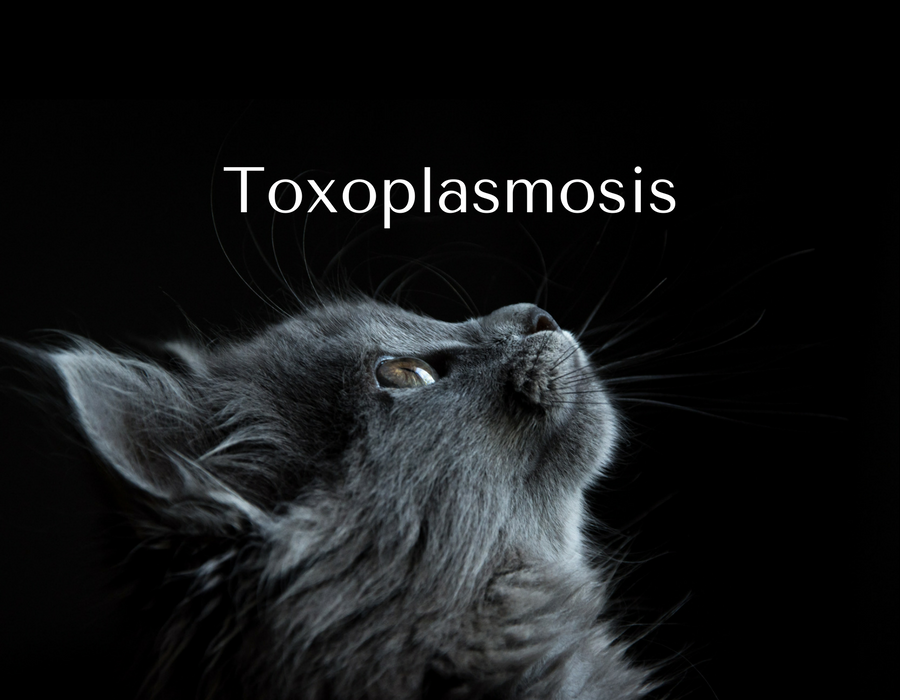If like myself you are an avid “crazy cat lady”, this may be a difficult read, as it turns out our feline friends can sometimes turn foe, when they’re harbouring dangerous parasites that is. Toxoplasmosis is a parasitic infection caused by Toxoplasma gondii, and is most famously spread via exposure to infected cat faeces. But how dangerous is it? Can it really alter our minds? Let’s get our claws in and find out what’s really going on with this spooky parasite…
Causative agent & epidemiology
T. gondii is an obligate intracellular protist, belonging to a group of parasites known as alveolates, and is capable of infecting practically all homeothermic animals. However, sexual replication can only occur in members of the Felidae family, hence cats are known as the definitive hosts of the parasite.

The disease has a global distribution, with the highest prevalence occurring in Latin America, Eastern/central Europe & Middle East. An estimated 22.5% of USA population over 12 years of age have been infected. There is a higher risk of contracting the disease in hot climates & low altitudes.
Life cycle
The life cycle of the parasite can be divided into a sexual reproductive component, occurring only within cats, and period of asexual reproduction which may take place in any warm-blooded animal, which are known as intermediate hosts.
The parasite undergoes three forms during its life cycle: oocysts, tachyzoites & bradyzoites
- Oocysts are formed only in definitive hosts, and then are released in cat faeces à takes 1-5 days to to sporolate & become infective
- Intermediate hosts (e.g rodents) infected after ingesting soil/water contaminated with cat faeces
- Oocysts transform into tachyzoites once ingested
- These migrate to neural/muscular tissue and develop into bradyzoites

Transmission
- Zoonotic: Animal to human transmission is the most common route of toxoplasmosis infection. When cats become infected by consuming contaminated rodents or other small animals, they then shed the parasite in their faeces, for up to 3 weeks after the initial infection. Litter boxes or soil used by such cats will be contaminated with the parasite, which can then be contracted by humans.
- Foodborne: Infection may occur via the consumption of contaminated, undercooked meat, or eating food that has been contaminated by utensils that have been in contact with raw, contaminated food.
- Congenital: If a pregnant woman becomes infected with the parasite, toxoplasmosis may be passed on to the embryo. This may cause severe consequences for the child, which we will examine later on.
- Organ transplantation: This is a rare, but possible route of infection, through receiving an organ from a donor infected with toxoplasmosis.
Pathology
Presence of the disease is generally asymptomatic in immunocompetent individuals. Between 10-20% of individuals may experience flu-like symptoms, but the disease is usually self-limiting in healthy people.
In individuals with suppressed immune systems, such as AIDs or chemotherapy patients, the disease may develop and become life-threatening.
- Following infection, the parasite begins to penetrate the intestinal wall and invade cells
- Bradyzoites then begin to form cysts within tissues
- Lymphadenitis (enlargement of lymph nodes) can then occur – with other nonspecific symptoms e.g. fever, headache, fatigue, sore throat
In most individuals, the bradyzoite cysts can remain in the body for the host’s entire lifespan, without causing any problems (known as latent toxoplasmosis). But if the person later experiences immunosuppression, the brazyzoites may convert back into tachyzoites, which may spread throughout the body and lead to neurological damage.
- In severe, acute cases, myocarditis, hepatitis, pulmonary necrosis and retinochorioditis can occur
- The risk of congenital toxoplasmosis is highest in final trimester – but infection more dangerous if occurs in first trimester. This can lead to miscarriage or stillbirth. Indications of infection in new-borns include; hydro/microcephalus, and ocular disease appearing later in development.
Other symptoms
One of the most interesting (and most hyped) aspects of the disease is the behavioural changes that it has been known to bring about in its intermediate hosts. For example, mice have an instinctive fear of cats and their scents, as they are their natural predators, hence it makes sense to avoid them. However, in toxoplasmosis-infected mice, these inhibitions can be lost, causing them to actually be attracted to the scent of cats, making them more likely to be found and eaten by these furry predators. This is a behavioural manipulation by the parasite to aid its transmission from the mouse to the cat, its definitive host.
But wait, aren’t we, like mice, intermediate hosts of the parasite? Could this disease alter our minds?

Before we jump straight into the twilight zone, yes, there is evidence of increased incidences of behaviour changes, such as anger issues, increase reaction times, and even schizophrenia in humans infected with toxoplasmosis, but it is also possible that this is a case of correlation rather than causation.
The Dunedin Longitudinal Study, carried out by Sugden et al, examined over 1000 people born between 1972-73 in New Zealand, and followed them on from birth. Blood samples were taken from 837 of these individuals at age 38, with 28% of them testing positive for toxoplasmosis.
The researchers found no links to any behavioural changes in these individuals, nor any increased rates of mental illnesses such as depression or schizophrenia. So perhaps mind altering parasites can be crossed off our list of things to fear? Well, not entirely, toxoplasmosis can be a life-threatening disease and although much of what we hear about it in the media is little more than scare-mongering, it’s always good idea to make sure you practice good hygiene and safe cooking, and probably best to get someone else to clean out the litter tray if you’re expecting. Sounds like our feline friends are here to stay then!
References:
https://www.cdc.gov/parasites/toxoplasmosis/index.html
https://link.springer.com/article/10.1007%2Fs00127-015-1048-8





Blog update – In The Mind Library
[…] Toxoplasmosis: a cat-astrophe to avoid […]
Zombiology? The Science of Life After Death – Seeking Science
[…] Similarly, prey species of cats can become zombified by toxoplasmosis, which you can read more about in one of our previous posts, here. […]